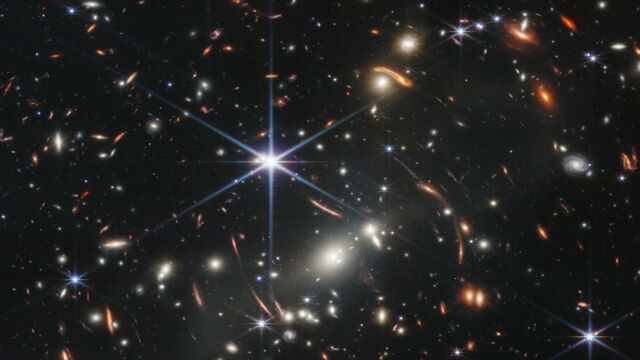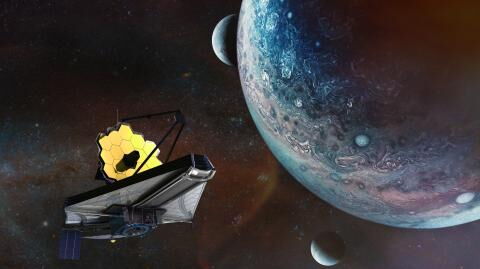On Monday 11 July, US President Joe Biden revealed the deepest image of the universe ever captured by NASA’s new James Webb Space Telescope at a White House event.
Discover our latest podcast
'The deepest and sharpest image to date'
The new telescope has produced 'the deepest and sharpest infrared image of the distant universe to date.' It shows the galaxy cluster SMACS 0723, known as Webb’s First Deep Field in spectacular detail.
The telescope has managed to capture thousands of galaxies – including 'the faintest objects ever observed in the infrared' – for the first time. According to NASA:
This slice of the vast universe covers a patch of sky approximately the size of a grain of sand held at arm’s length by someone on the ground.
It's here–the deepest, sharpest infrared view of the universe to date: Webb's First Deep Field.
— NASA (@NASA) July 11, 2022
Previewed by @POTUS on July 11, it shows galaxies once invisible to us. The full set of @NASAWebb's first full-color images & data will be revealed July 12: https://t.co/63zxpNDi4Ipic.twitter.com/zAr7YoFZ8C
The galaxy 13 billion years ago
The galaxy cluster is 4.6 billion light-years away from Earth. Its combined mass acts as a gravitational lens, meaning much more distant galaxies behind it are magnified. The telescope's camera has focused in on these distant galaxies, which have tiny, faint, never-before-seen structures, including star clusters and diffuse features.
Jonathan Gardner, deputy senior project scientist at NASA, said during a recent news conference, as reported by The Guardian:
Webb can see backwards in time just after the big bang by looking for galaxies that are so far away, the light has taken many billions of years to get from those galaxies to ourselves.
NASA administrator Bill Nelson said, as per Sky News:
That light that you are seeing on one of those little specks has been travelling for over 13 billion years. And by the way, we're going back further, because this is just the first image. They're going back about 13 and a half billion years. And since we know the Universe is 13.8 billion years old, you're going back almost to the beginning.
We could know if planets are habitable
As the telescope continues to capture images of the earliest galaxies in the universe, researchers will be able to learn more about their mass, age, history, and composition. Nelson said:
It is going to be so precise you are going to see whether or not planets are habitable. And when you look at something as big as this we're going to be able to answer questions that we don't even know what the questions are yet.
This is the first image to be released of a series of full-colour images. The full suite of images will be released Tuesday 12 July at 10:30 am EDT during a live NASA TV broadcast.
Read more:
⋙ Here’s all you need to know about the 3 meteor showers in July
⋙ ‘Never-before-seen’ crystals found in meteorite that exploded on Earth















